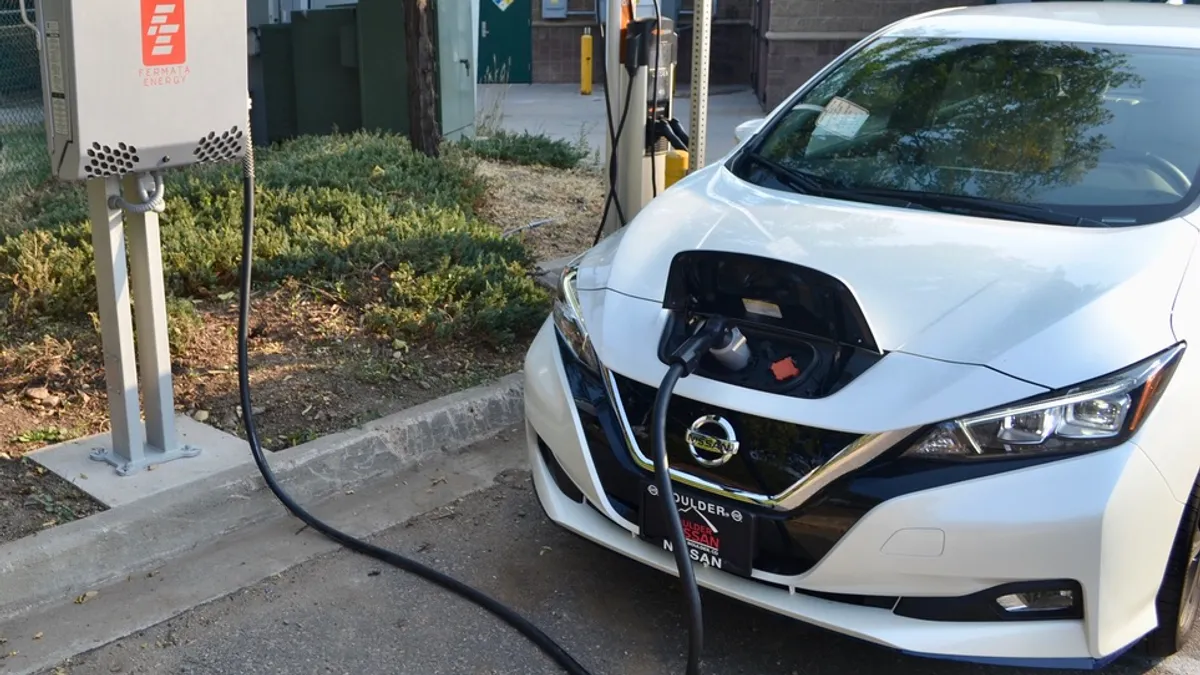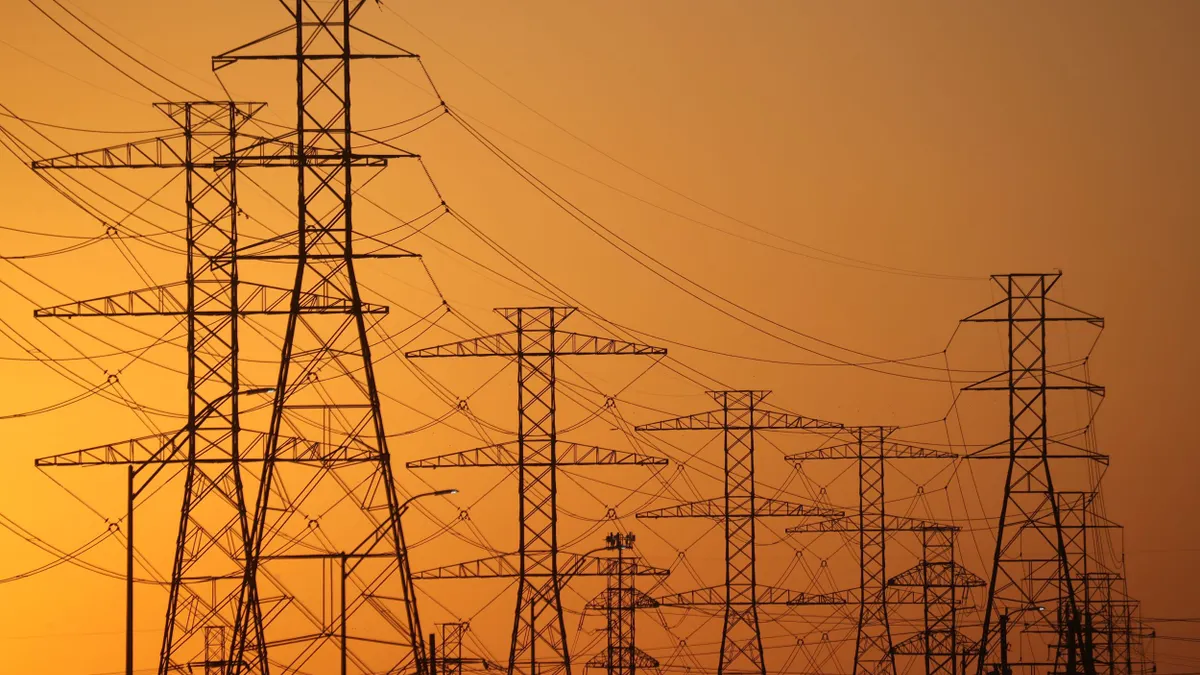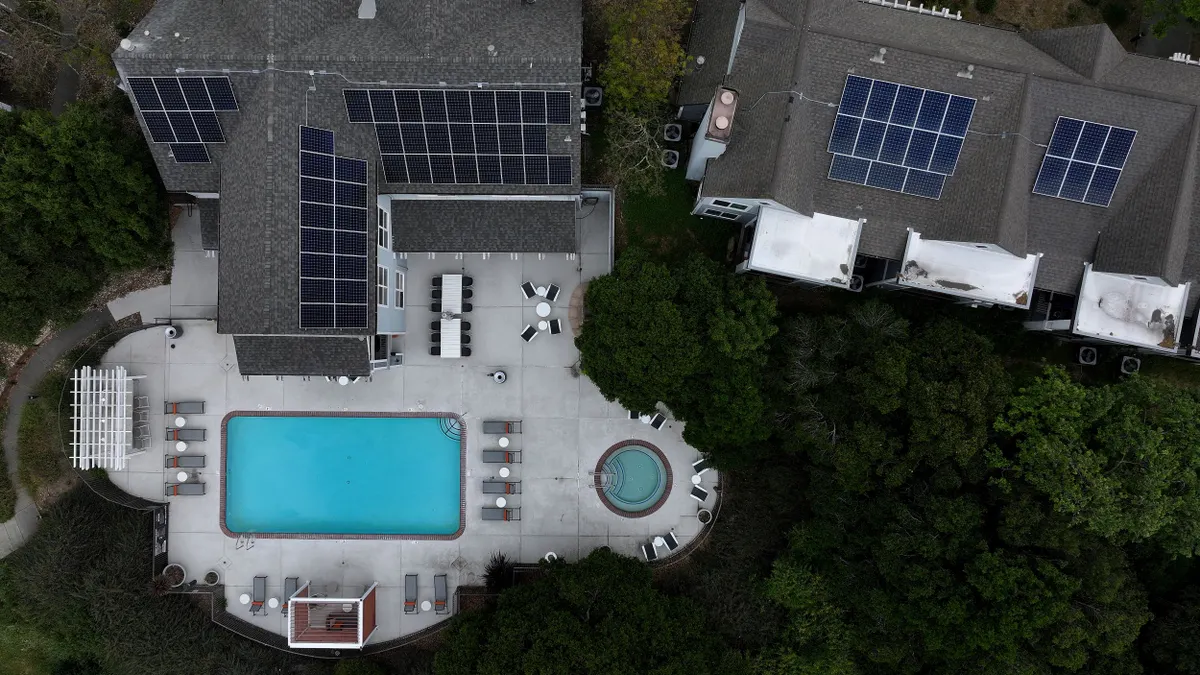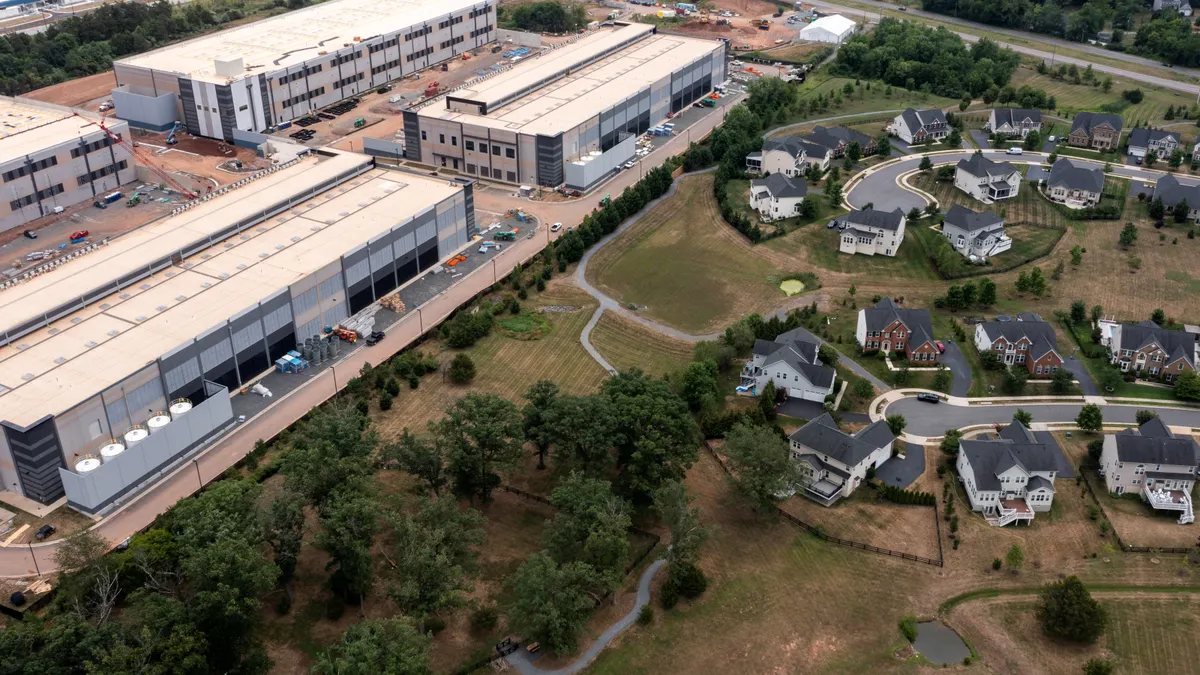Editor’s note: This story is part of the Utility Dive Outlook on 2021, a series on the trends that will shape the industry in 2021. For a look at the business trends affecting other industries, see the Dive Outlook on 2021.
Electric vehicles are growing in popularity, and utilities are preparing for a future where their value goes far beyond transportation.
As more EVs hit the road, there are growing questions about how utilities will manage their charging needs. Rocky Mountain Institute (RMI) has estimated that electrifying all of the roughly 251 million light duty vehicles on U.S roads today would increase annual electricity demand by about 25% — and that doesn't include medium and heavy-duty applications like freight and public transit along with a host of other applications.
While the transition to a fully electric fleet could take decades to achieve, the near-term implications for grid management as more and more EVs hit the road are significant.
Along with adding demand, EVs are increasingly seen as potential grid assets: aligning their charging needs with times of higher renewables production and lower grid stress can help decarbonize transportation and operate electric systems more efficiently. Managed charging, through time-of-use rates and demand response programs, is known as vehicle-grid integration and is already the subject of utility programs around the country.
This approach to managing EV demand — largely reliant on unidirectional power flows that adjust how and when chargers are pulling energy from the grid — is sometimes referred to as level 1 integration (V1G). But there is also interest in using the energy in EV batteries to serve other loads, with what are known as vehicle-to-grid (V2G) capabilities.
While those capabilities are utilized in parts of Europe and Asia, experts say the United States is still years away from widespread use of V2G. There are a few utilities rolling out pilot programs to test the capabilities, including Duke Energy in North Carolina, but there are still safety and engineering concerns to be addressed, technical problems to solve and business cases to study.
"It can be pretty complicated to make it all work. I’ve read hundreds of technical papers on these topics and I just don’t think the value proposition of V2G is at all clear," said Chris Nelder, a manager with RMI's mobility practice.
That said, there is a growing consensus that millions of vehicle batteries will one day serve as energy resources beyond V1G managed charging, to power buildings and microgrids and feed energy back into the bulk power system.
"An internal combustion vehicle has one value: It drives people around. EVs are different. There are many value streams which can benefit third parties and customers. What V2G does is liberate those value streams."

David Slutzky
Fermata Energy CEO and founder
Bidirectional charging "can accelerate the adoption of EVs and accelerate renewables," said David Slutzky, Fermata Energy CEO and founder. "That's where we're headed, and we're moving quickly."
Unlocking value streams and use cases
Fermata is a key player in this space. Last year, the company's bidirectional charging system was the first to become certified to a new Underwriters Laboratories (UL) North American safety standard, UL 9741, the Standard for Bidirectional Electric Vehicle Charging System Equipment.
This makes the system the first commercially-available charger to meet the North American standard for bidirectional EV chargers. According to Slutzky, this is a tipping point for the technology in the United States and will allow utilities to begin experimenting with bidirectional programs and the values they can bring to the grid and to customers.
"An internal combustion vehicle has one value: It drives people around," said Slutzky. "EVs are different. There are many value streams which can benefit third parties and customers. What V2G does is liberate those value streams."
Those values could include resiliency, demand charge management, Volt/VAR optimization, frequency regulation and others. Fermata's chargers, just a couple dozen at first, began shipping to pilot partners last fall following pandemic-related production delays.
For bidirectional charging, Fermata's UL safety certification is a watershed moment, according to Holmes Hummel, founder of Clean Energy Works, a nonprofit focused on accelerating financing for the sector. "This is the beginning of its edge catching," said Hummel.
"We have known of the technological potential [of V2G] for a decade," said Hummel. "But it wasn't until last month the partners we work with could place an order, install it and have it working that afternoon."
The business cases for bidirectional charging are likely to begin by connecting them with buildings (V2B) rather than the broader grid, said Nelder, due to the complexities involved.
"Before V2G really becomes a commercial reality, I expect various kinds of V2B solutions, where vehicles can be used as backup batteries for buildings," he said. "But that also entails a lot of technical issues."
"We have looked at the value stack of vehicle-grid integration and we think the vast majority of it is in managing charging to provide grid services, and not actually supplying energy from vehicles back to a building or to the grid."

Chris Nelder
Manager, Rocky Mountain Institute
According to Slutzky, after the technical issues are addressed, the potential value of bidirectional charging is significant. A Nissan LEAF connected to a 25 kW bidirectional charger could help some commercial customers significantly lower demand charges. If the vehicle was used two to three times a month to reduce demand charges of $30/kWh — a high figure, but not unheard of, he said — that could create savings of $9,000 annually, per vehicle.
"That's a free car and a free charger in a few years," said Slutzky. "It's that disruptive."
"Most people have narrowed their views of V2G to just peak demand management," said Hummel, but that likely understates their potential significantly.
A June 2020 report from a California joint-agency work group on vehicle-grid integration gives a look at the extent of the opportunity and quantifies the potential benefit.
The report, issued by the California Public Utilities Commission (CPUC), found 320 different integration use cases that "should be considered as able to provide value by 2022," and included dozens of V2G applications covering resiliency and peak load reduction applications with some delivering thousands of dollars in annual value per vehicle.
But according to Nelder, most of the value in vehicle-grid integration is in managed charging and not V2G applications.
"We have looked at the value stack of vehicle-grid integration and we think the vast majority of it is in managing charging to provide grid services, and not actually supplying energy from vehicles back to a building or to the grid," he said.
Pilots using Fermata's charger
Roanoke Electric Cooperative has acquired one of the Fermata charging systems, and partnered with Clean Energy Works to test multiple business cases for bidirectional charging with a single Nissan LEAF.
"The value proposition today is still relatively narrow, compared to what we see in the future," said Hummel. While Roanoke will begin with one vehicle, Hummel said the utility expects the first 10,000 EVs in its service territory will log 100 million miles a year— while still being parked 90% of the time.
"We're looking at a number of use cases, and ways this could be expanded," said Roanoke CEO Curtis Wynn, who is also president of the board of the National Rural Electric Cooperative Association.
"The value proposition today is still relatively narrow, compared to what we see in the future."

Holmes Hummel
Founder of Clean Energy Works
Roanoke's pilot is underway, and Wynn said the two immediate use cases the utility will consider are to reduce demand charges for commercial accounts and to allow residential customers to sell power back to the utility when the grid is stressed. There may also be "opportunities for resiliency, in the event we have an outage," said Wynn.
The pilot has no specific end-date, but Wynn said he expects it to run at least a year while the utility looks for new use cases to test.
"Fundamentally, what we'd like to see on a larger scale is how this might play out with the utilization of school buses and larger vehicles that could support the same thing, resiliency," said Wynn.
Fermata has also sent a bidirectional charger to the City of Denver, where it will be used in a small pilot at The Alliance Center, a nonprofit event and collaborative working space. Fermata has an agreement with Nissan to test these applications using the LEAF, but Slutzky said there is a non-disclosure agreement in place that prevents him from giving details.
And before its new charger was developed, the company was experimenting with providing services in wholesale markets.
In 2016, Fermata connected four Nissan LEAF EVs paired with 30 kW bidirectional chargers in three different locations, and used them to participate in the PJM Frequency Regulation market. Fermata is a curtailment services provider in the PJM through a special arrangement with the grid operator.
"The vehicles were used as fleet vehicles during the day, and in the evenings we'd bid into the frequency regulation markets," said Slutzky. "We aggregated those four vehicles and were about 97% responsive to PJM's signals."
School buses may be first at-scale use for V2G
The idea of using an electric vehicle to power a residence is attractive, but experts say this is unlikely to be the first area where V2G capabilities take hold. More likely are school buses, which have much larger batteries and sit idle for long stretches.
"I don't think the residential applications will be the first" to be widely commercialized, said Hummel. Finding more value in electrified passenger vehicles is "obviously of value to extend the value proposition for residential communities ... But we may even sooner see that value proposition developed through the electric school bus market."
It only takes five electric school buses to provide about 1 MWh of onboard storage, according to Hummel. And the duty cycle for a bus is low — operating only a few hours a day, and often sitting idle for the summer months.
Duke Energy recently got approval for a small electrified school bus pilot in North Carolina that will include studying V2G potential. The program will start small, with 30 buses between the Duke Energy Progress and Duke Energy Carolinas territories.
The pilot, is "designed as a proof of concept for these vehicles," said Lang Reynolds, Duke Energy's director of electrification strategy. "There's been a lot of hype and excitement around school buses and V2G. Even though we know the technology works, we need to learn more about how it works in practice."
"We really have more questions than answers at this point, around V2G as a resource."

Lang Reynolds
Duke Energy's director of electrification strategy
Duke does not plan to do any bidirectional dispatch with the buses in the first year or two of the pilot, said Reynolds, and will instead study their charging needs. "We're going to be very deliberate about this process and come into it with a long period of time where we're not doing anything to impact normal operations. ... And when we do start testing bidirectional capabilities, we're just testing it, ensuring we can dispatch it at the power levels claimed by bus manufacturers and chargers."
But that will shift, eventually. "There are a lot of potential future use cases we're interested in," said Reynolds, including demand charge management for customers and backup power for resilience.
Reynolds said the school buses Duke has been looking at have about 50 kW to 100 kW of potential bidirectional power capacity, and can carry about 100 to 150 kWh of energy per bus.
"There are different configurations possible, and we're still reviewing offerings," he said. Duke's pilot would also allow the utility to keep the batteries after they have exceeded their useful life in buses, and to repurpose them as stationary storage.
There are tens of thousands of buses in Duke's service territory, said Reynolds. "If they were all electric, that's a significant resource. The real question is how that translates into a real world scenario ... we really have more questions than answers at this point, around V2G as a resource."
Funding the future, focusing on the present
Funding for electric vehicle infrastructure has been a sticking point to date, but experts say there has been recent progress. President-elect Joe Biden included emissions-free transportation initiatives in his platform and has called for the government to support installing a half million chargers. And at the state level, there has been significant movement in the last year, said Katherine Stainken, senior policy director for Plug in America.
In December, the CPUC approved several measures to accelerate EV and infrastructure deployment, including more than $100 million to fund studies on and demonstrations of vehicle-grid integration. In addition, Congress authorized the U.S. Department of Energy to conduct a larger effort on vehicle-grid integration in the end-of-year stimulus law. Within both the California and federal initiatives are efforts aimed at bidirectional charging, said Stainken.
But while there is potential for V2G, Stainken said the group also worries that it is a "flashy term" with the potential to distract policymakers.
"We don't want policy makers to get so caught up with V2G that they don't move forward with other aggressive policies," she said. The near-term future for efficiently integrating EVs remains self-managed charging on one-way network charging, though the technology is evolving quickly. "We need to continue to focus on keeping costs for drivers low, whether that be V1G or V2G."
"This will be the breakthrough year, when data is compiled and released," Stainken said of utility pilots focused on integrating EVs into the electric grid.























